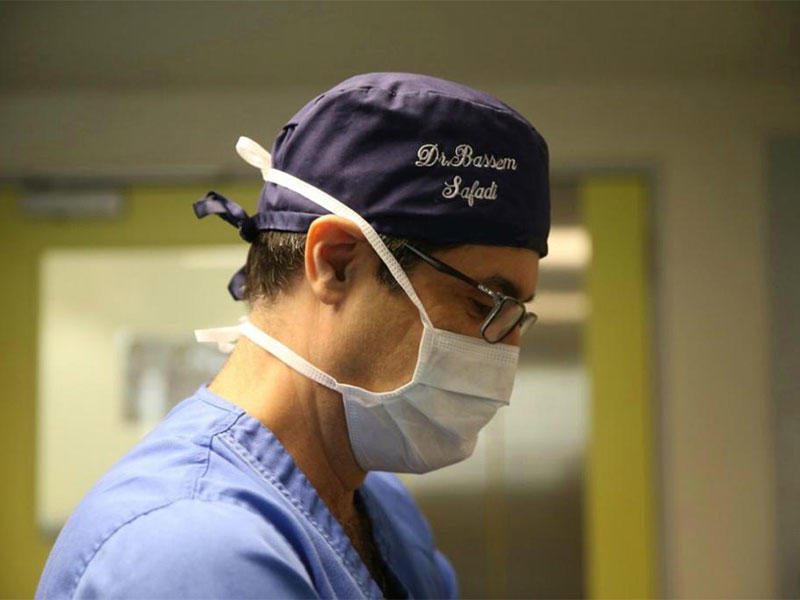Dr. Bassem Safadi, Clinical Professor and Chair of the Department of Surgery
Skin lacerations and depressed skull fractures.

I was on the sixth floor in a meeting with hospital administrators. I just remember hearing a very loud noise and seeing the panels across the room falling.
Our first instinct was to go down to the ground floor and follow earthquake evacuation procedure, but as we were walking down the stairs, we saw smoke rising. Right then, we knew it was an explosion and that we’d have to start preparing to receive patients, so I went straight to ER.
The main hospital door to the ER was jammed. The first wave of patients was those geographically close to the hospital. They were mostly injured by shards of glass as they were not close to the blast, but they were panicking and demanded immediate attention at a time when most of our physicians and staff were still on their way to the hospital.
We tried as much as possible to triage them. For those who had superficial lacerations, we sutured them with surgical staples, sometimes without anesthesia just to remove the danger and stop the bleeding.
Within 15 minutes, people with more serious injuries started to arrive. They either had something heavy fall on them or had been blown away and landed on something because of the tremendous impact of the blast, which led to cases of serious head injuries or loss of consciousness.
As more doctors rushed in, I headed to the OR. Of the 360 patients we received, we operated on more than 60. The vast majority had skin lacerations, while others had depressed skill fractures. Many suffered from pneumothorax, where the air becomes trapped between the lungs and chest wall due to rib fractures or objects that had penetrated the chest.
What we did the first day was damage control: identify life-threatening problems, stabilize the fractures and intubate the patients who couldn’t breathe, and clean and close wounds, without necessarily paying attention to esthetics. Over the following days, we dealt with repairing broken bones in the face and the skull.
Our students and residents worked tirelessly and were able to organize in order to treat every single patient. I’m very proud of them. It’s telling that given the circumstances, no patient died because of a missed injury. They were on top of things and this is an excellent testament to their reliability.